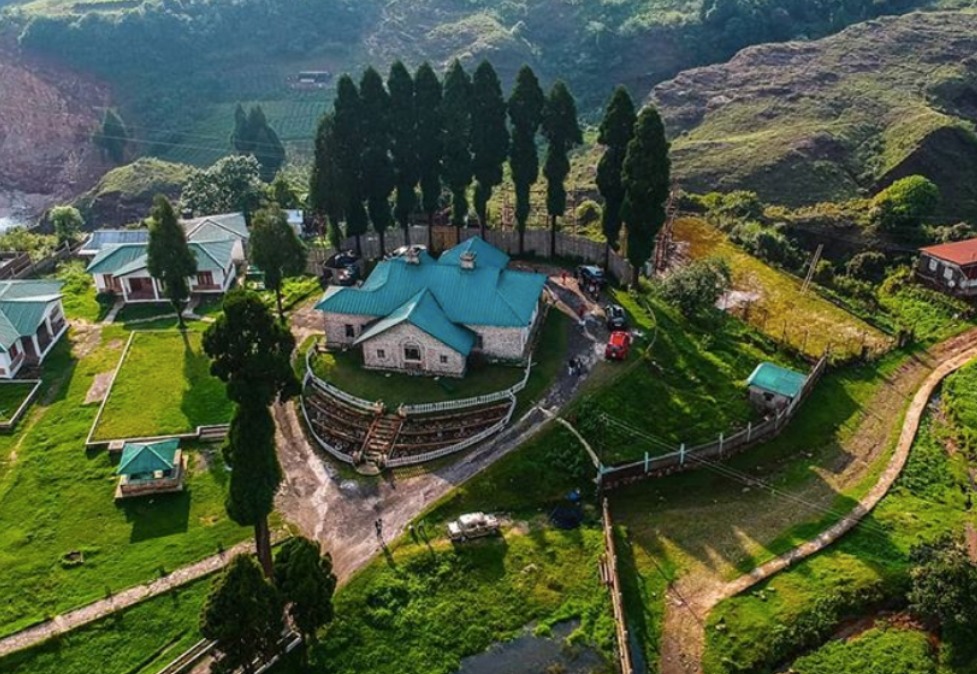North East India, a region rich in natural beauty and cultural diversity, offers an unparalleled experience for photography enthusiasts. From its mist-covered hills to its vibrant local festivals, the region provides countless opportunities to capture stunning images. With a landscape that ranges from lush tea gardens and serene lakes to dramatic mountain vistas and bustling markets, North East India stands as a testament to nature's artistry and human culture. This article explores some of the most photogenic spots in the region and how photography enthusiasts can make the most of their visit.
One of the prime destinations for photography in North East India is Gangtok, the capital of Sikkim. Gangtok’s unique blend of modernity and tradition offers diverse photographic subjects. The city is known for its panoramic views of the Kanchenjunga, the third-highest mountain in the world, which creates a stunning backdrop for any photograph. The bustling markets of Gangtok, such as M.G. Road, offer vibrant street photography opportunities, capturing the local life and colorful Tibetan artifacts. For those interested in capturing the serenity of nature, the nearby Tsomgo Lake, also known as Changu Lake, is a spectacular spot. The lake, nestled amidst the snow-capped peaks, reflects the sky and surrounding mountains, creating a perfect scene for landscape photography.
To fully experience the visual splendor of Gangtok, photography enthusiasts should consider exploring various Gangtok trip packages. These packages often include guided tours to key locations around the city, such as the Rumtek Monastery, which offers architectural and cultural photography opportunities. Additionally, some packages provide trips to the nearby Nathula Pass, where photographers can capture the rugged terrain and high-altitude flora and fauna. Such guided tours not only simplify the travel logistics but also ensure that photographers have access to the best spots for their craft.
Another highlight of Gangtok’s photographic appeal is its vibrant festivals. The Losar Festival, which celebrates the Tibetan New Year, transforms the city into a kaleidoscope of colors with traditional dances, music, and ceremonial attire. Capturing the dynamic scenes of this festival provides a unique opportunity to document the cultural heritage of the region. The colorful prayer flags fluttering in the wind, the intricate designs of traditional costumes, and the lively celebrations all make for captivating photographic subjects.
Beyond Gangtok, the North East region boasts other equally impressive locations. The state of Meghalaya, known as the “Abode of Clouds,” is renowned for its stunning landscapes and unique natural formations. The Living Root Bridges of Cherrapunji, crafted from the roots of ancient trees, offer a fascinating subject for photography. These bridges, woven naturally over centuries, create an enchanting scene of nature’s resilience and human ingenuity. The misty hills of Shillong and the picturesque Umiam Lake are also perfect for capturing the tranquil beauty of this region.
Arunachal Pradesh, another gem of North East India, offers breathtaking vistas that are ideal for landscape photography. The Tawang Monastery, perched high in the mountains, provides a dramatic setting against the backdrop of the snow-clad peaks. The surrounding areas, including the Sela Pass and the Bum La Pass, offer striking views and opportunities to photograph the region's diverse flora and fauna. The lush green valleys and rugged mountain terrain present a contrast that can yield striking photographic compositions.
Assam, with its rich cultural tapestry and natural beauty, is another must-visit for photographers. The Kaziranga National Park, a UNESCO World Heritage Site, is renowned for its population of one-horned rhinoceroses and diverse wildlife. Capturing these majestic creatures in their natural habitat is a rewarding experience for wildlife photographers. The tea gardens of Assam, with their neatly manicured rows and the backdrop of the hills, also offer picturesque scenes that are perfect for capturing the essence of rural life in the region.
In addition to its natural wonders, North East India is home to vibrant tribal cultures that provide ample opportunities for cultural photography. The traditional festivals of the Naga tribes, such as the Hornbill Festival, showcase intricate tribal costumes, traditional dances, and colorful rituals. These festivals not only offer a glimpse into the rich cultural heritage of the region but also provide a dynamic backdrop for capturing the spirit of the local communities.
For those planning a trip to North East India, it's advisable to consider a range of travel packages that cater specifically to photography enthusiasts. These packages often include accommodations, transportation, and guided tours tailored to help photographers explore the best spots and capture their subjects in optimal lighting conditions. Additionally, many packages offer the services of local guides who are knowledgeable about the region’s hidden gems and can provide valuable insights into the best times and places for photography.
In conclusion, North East India offers a treasure trove of photographic opportunities, from its majestic landscapes and serene lakes to its vibrant festivals and rich cultural heritage. Whether you are a seasoned photographer or an amateur with a passion for capturing the beauty of the world, this region promises a diverse and inspiring experience. By exploring destinations like Gangtok and other key locations across the North East, and by considering specialized trip packages, photographers can ensure that their journey is both memorable and visually rewarding.





Comments